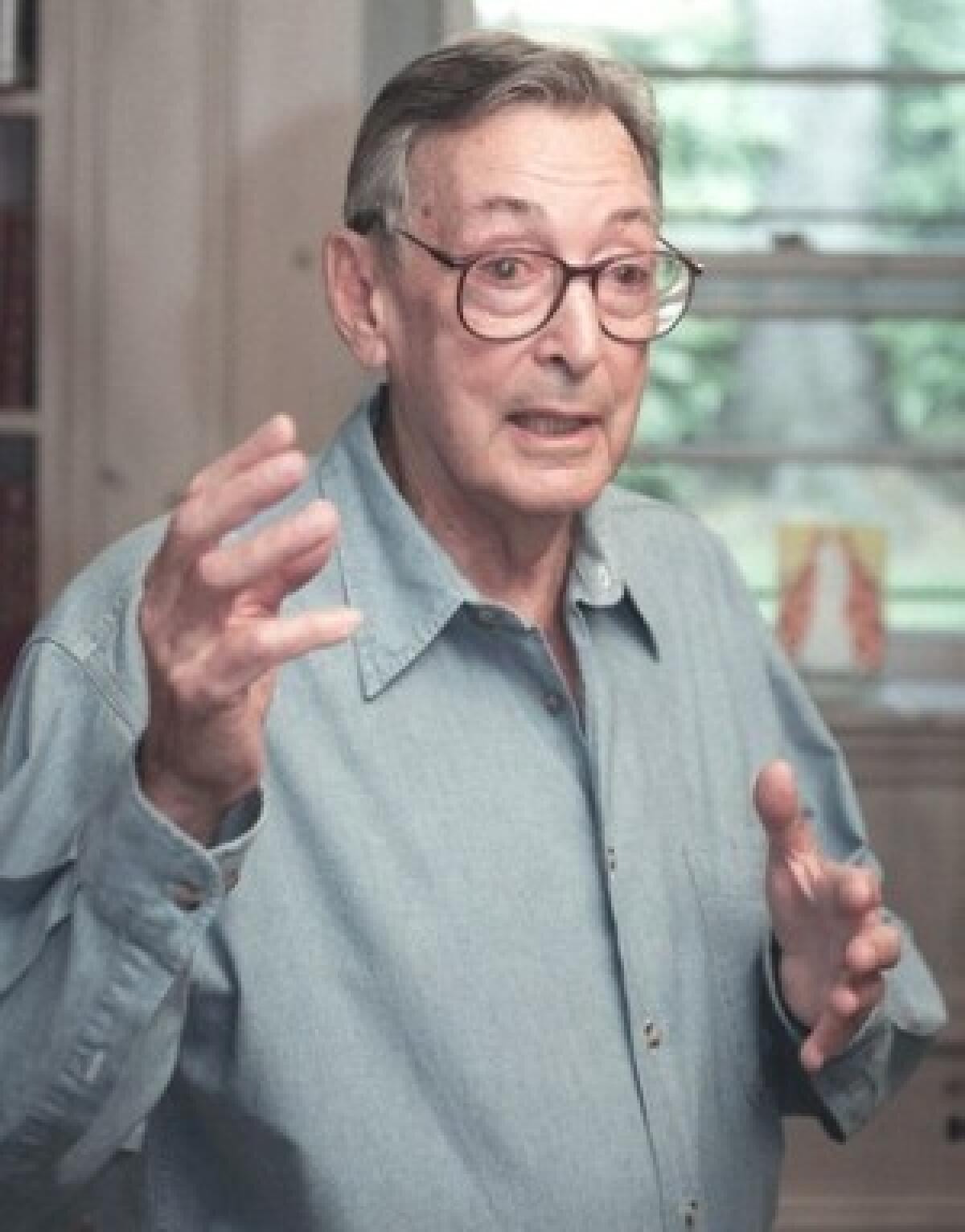Robert F. Furchgott dies at 92; scientist won Nobel Prize

- Share via
Robert F. Furchgott, one of three American scientists awarded the 1998 Nobel Prize for Physiology or Medicine for their discovery that nitric oxide transmits signals within the human body, died May 19 in Seattle. He was 92.
Furchgott, formerly of the State University of New York in Brooklyn, shared the $995,500 prize with Louis J. Ignarro of UCLA and Dr. Ferid Murad of the University of Texas Medical School in Houston.
Their discovery led to several breakthroughs, including a new treatment for newborns with dangerously high blood pressure in their lungs and drugs for the treatment of shock. It also helped pave the way for the anti-impotence drug Viagra.
“The discovery of nitric oxide and its function is one of the most important in the history of cardiovascular medicine,” Dr. Valentin Fuster, president of the American Heart Assn., said at the time the Nobel Prize was announced. “It has allowed us to improve the treatment of certain patients” and will probably lead to the discovery of new ways to treat high blood pressure and heart attacks, he added.
In his research, Furchgott examined the effects of such naturally occurring chemicals as acetylcholine on blood vessels and, in 1980, concluded that they stimulated the release of a signaling molecule that caused muscles of the blood vessels to relax. He called this signaling agent EDRF but did not know its chemical composition.
While working both independently and with Furchgott, Ignarro demonstrated that EDRF was, in effect, nitric oxide.
When Furchgott and Ignarro presented their conclusions at a conference in 1986, the Nobel Assembly noted that “it elicited an avalanche of research activities in many different laboratories around the world.” By the end of 1992, so many new results had appeared that the journal Science named nitric oxide the “Molecule of the Year.”
Murad studied how nitroglycerin and other drugs used to dilate blood vessels functioned. In 1977, he discovered that they promoted the release of nitric oxide. He speculated that hormones produced by the body might also act by releasing nitric oxide, but there was no experimental evidence to support that possibility.
Furchgott was born in Charleston, S.C., on June 4, 1916, and, according to his lengthy autobiography on the Nobel Prize website, he developed an early interest in bird-watching, shell collecting and science in general during his childhood.
He earned a degree in chemistry from the University of North Carolina and a doctorate in biochemistry from Northwestern University. He held teaching positions at Cornell University and Washington University, and conducted research at both schools, before accepting the post of chairman of the department of pharmacology at the State University of New York in Brooklyn in 1956. He was head of that department until stepping down in 1983 and continued as a professor until retiring in 1989. Even after retirement, he was still active in the lab.
He is survived by three daughters, four grandchildren and one great-grandchild.
Times staff writer Thomas H. Maugh II contributed to this report.
More to Read
Sign up for Essential California
The most important California stories and recommendations in your inbox every morning.
You may occasionally receive promotional content from the Los Angeles Times.












